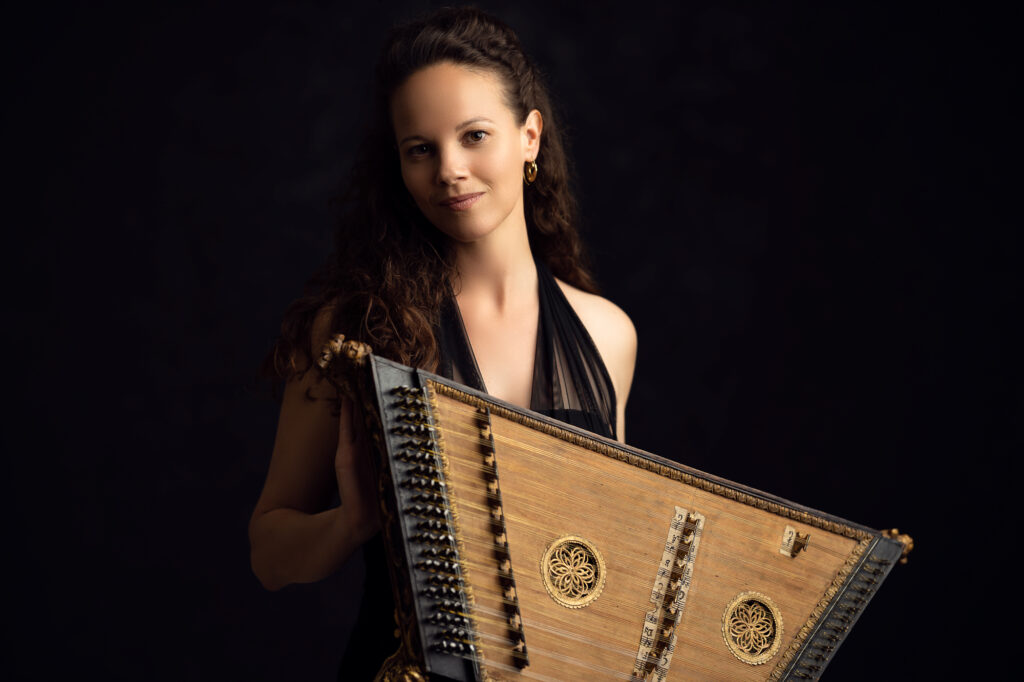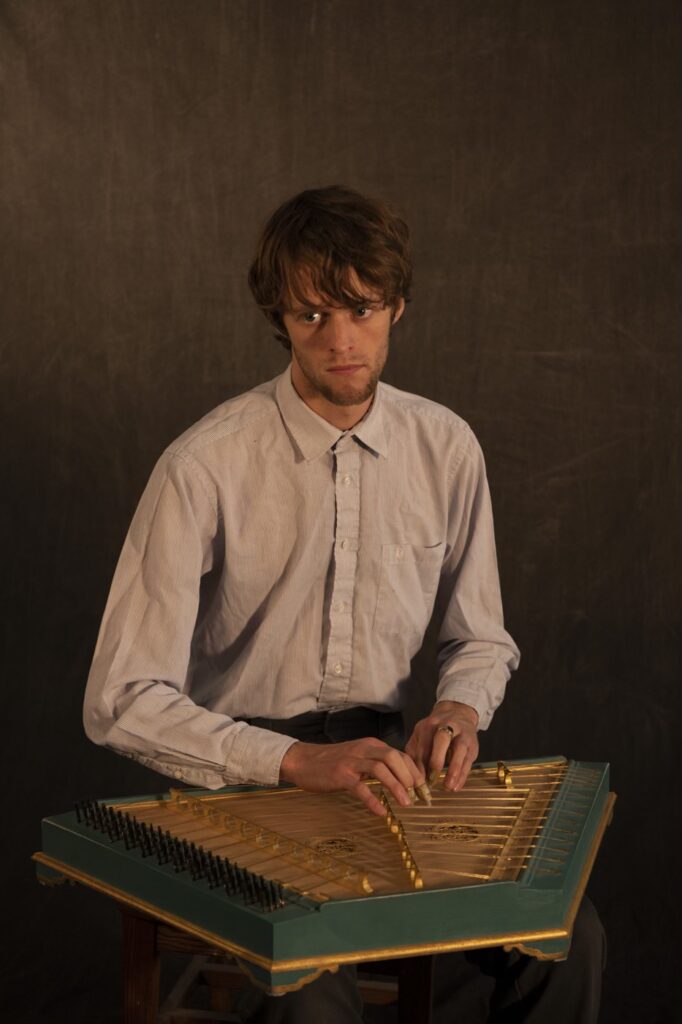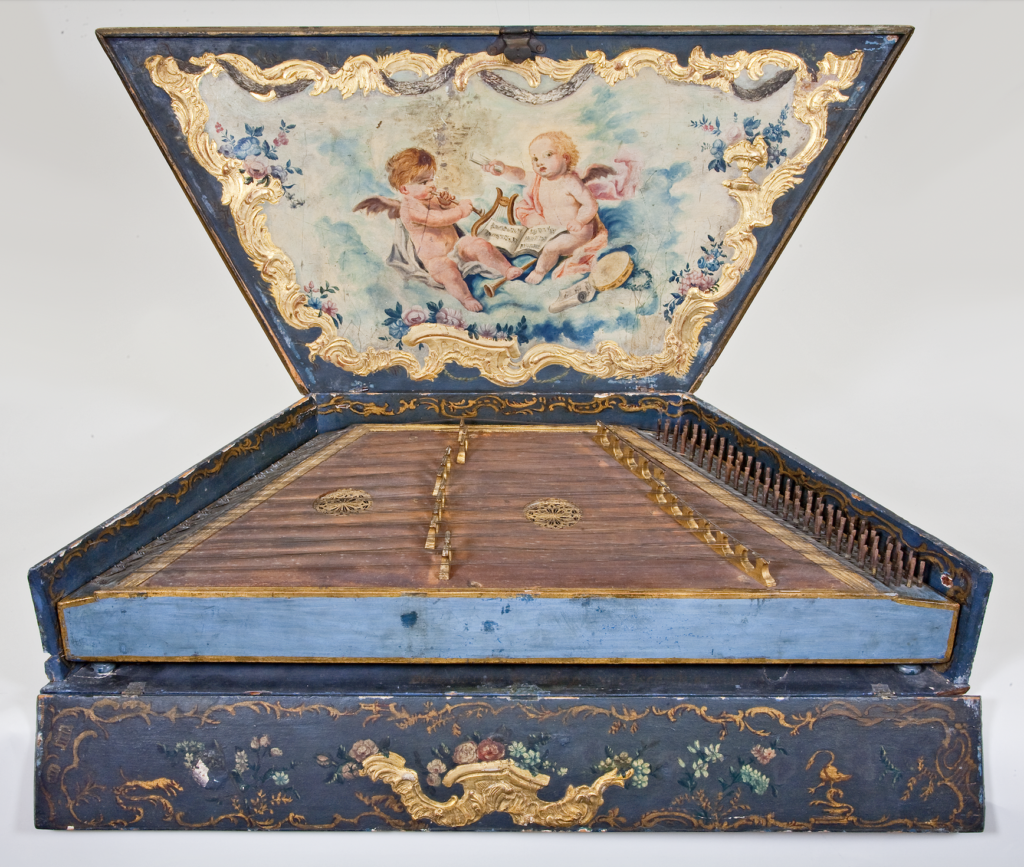Once more familiar than the harpsichord, the salterio is being rediscovered by musicians drawn to its complexity, history, and spellbinding sound.

A sound that is reminiscent of bubbles popping or Tinkerbell chattering saturated the musical landscape of the baroque era. Today, the stringed instrument that made these sounds is largely unknown. And yet it triggers in listeners a desire to stretch like a cat reaching for a patch of sun. Something magical happens when the salterio is played.
While the sound of the salterio may seem otherworldly, scholars have traced its origins to antiquity—most likely to the epigonion of ancient Greece. That early instrument, more a harp than a zither, was a starting point for a family of instruments that would one day be played all over the world: the hammered dulcimer, the Chinese guzheng, and even the piano are all descended from ancient harps. One of the most influential of these ancient instruments was the salterio’s closet kin, the psaltery. The psaltery’s name comes from the ancient Greek psaltérion, which means “stringed instrument. . . harp.”

While its early ancestors had gut strings held taut over a wooden board, by the Middle Ages, the psaltery’s strings were frequently made from metal wire. The instrument was usually carried by a strap and played on the lap or a table. A psaltery was mentioned in a third-century BC Greek translation of the Old Testament, the Septuagint, and this earliest form was often used as an accompaniment in the church. Use in Europe has been dated to the eleventh century and continued in both religious contexts and everyday life through about 1500, even appearing in the Canterbury Tales. In a Belgian Book of Hours of about 1470, a psaltery is shown being played by a cat—and if even cats were playing psalteries, we know they must have been really popular.
At what point the salterio came to be is unclear. Its development seems to have been both fast and slow. It spread widely and was adopted rapidly, but the form, stringing, and tuning preferences concretized over centuries and across continents until it exploded in popularity in the eighteenth century. Ultimately, it took on a generally trapezoidal form with many strings grouped into courses.

Artist and salterista Marc Armitano Domingo found his way to the salterio in a manner much like many of his predecessors—all in good time. He played the cello, then the viola da gamba, as a young musician. He built a lute in high school because it seemed like a fun thing to do. And when he found the salterio, he was entranced by the aural experience and historical resonance. The many strings grouped into courses create a “choral effect,” he says. It is impossible to keep the strings in each course perfectly in tune to the same note, so the slight variations create “a subtle vibrato” that he finds enchanting. The instrument also takes advantage of what is called sympathetic resonance—strings vibrating in response to a neighboring string being hammered or plucked. The salterio is classically played in three ways: with hammers, which look more like drink stirrers with weighted tips than the carpenter’s tool; one’s fingernails; or with ditali, finger rings with a feather plectrum, or pick, attached. The simplest technique, known as finger-pizzicato, makes a clear sound that is “ethereal” says musician, salterio expert, and historical researcher Franziska Fleischanderl. The plectra-pizzicato technique, using ditali, produces a bright sound useful for large venues. Armitano Domingo prefers that technique, while
Fleischanderl reaches for the hammers. Her performances using the simple tools have made her “one of my two favorite musicians in any instrument” says Darryl Martin, conservator and coordinator of graduate studies at the National Music Museum in Vermillion, South Dakota. Fleischanderl grew up in Austria playing the hackbrett, a dulcimer played only with hammers. She was attracted to the salterio for its variety of playing techniques—and the resulting range of sounds and styles made by a single instrument. To understand an instrument—or truly any object—one must immerse oneself not only in the thing itself, but in its potential, its lived possibilities, and the rituals that form around it. The salterio’s diversity of sounds, methods of playing, and geographic range emphasize this. While the salterio had been on the ear for centuries, it gained a particular foothold in Spanish and Italian society in the baroque period, making its way into aristocratic music education as well as retaining a foot-hold in monasteries and convents.
Armitano Domingo notes that it was used as part of an “incredibly large-scale performance for the wedding of Ferdinand I de Medici to Christina of Lorraine” in 1589, and “Vivaldi writes the earliest surviving solo for it in his opera Il Giustino in 1724.” “The average joe,” Armitano Domingo says, “was more accustomed to the sound of the salterio than that of even a harpsichord.” People may have been attuned to the sound, but the look of salterios was by no means the result of copy-and-paste in the eighteenth century. Virtually no two look the same, as is evident in the thousands of examples in the National Music Museum. Craftspeople often go there with wish lists of pieces to study—to measure and learn from—in order to bring their centuries-old expertise to contemporarily instruments. If you’re tempted to try your hand at the salterio, Armitano Domingo says original musical compositions “give you virtually all the information needed to understand what an instrument is capable of.”

Photograph courtesy of Marc Armitano Domingo.
One can learn beginner pieces or “virtuosic solos in operas and chamber ensembles,” court music, or folk tunes. However, most of us probably aren’t about to learn the salterio, and period examples may be best played by musicians like Fleischanderl and Domingo, or, Martin says, preserved in museum collections. “Pieces rarely come up for auction, though an early nineteenth-century example sold for $4,200 in 2024. But we can watch and listen to performances by Fleischanderl on YouTube, or try to catch Armitano Domingo in New York City. We can take in the take in the portrait of Àngela Seguí Poly by Pascqual Calbó Caldés in the Museo de Menorca in Spain, where the sitter proudly wears her plectrum rings, one hand on the instrument.
We can imagine hearing the light bright tone in a grand ballroom, a church nave, or a comfortable salon. We can lean into the tone and stretch like a cat reaching for the sun.
